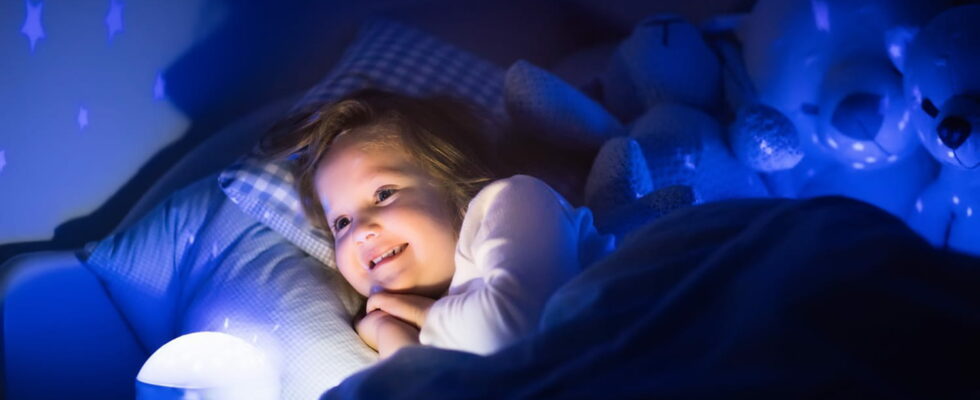Be careful with the toys you give to your children! The Health Safety Agency has just sounded the alarm, noting that the protection standard in force was riddled with errors and underestimated a serious danger.
Spinning tops, stuffed animals, drawing tablets, interactive games… Our children all have toys decorated with light sources via LEDs. As on most computer, smartphone and television screens, these famous “light-emitting diodes” – that’s their full name – emit what is called blue light. The problem is that these rays pass through the eye and reach the retina. In the event of regular and prolonged exposure, they can actually damage it.
However, the blue light emitted by LEDs constitutes a danger for young children, whose immature retina cannot offer adequate protection. Also, repeated use of toys with high light intensity – much higher than that of screens – could compromise their eye health in adulthood. In addition, an excess of blue light in the evening disrupts the chronobiological rhythm and can therefore increase the time it takes to fall asleep. Ultimately, this can influence mood and lead to problems. This is why standards are necessary to protect the health of the little ones.
That’s good, there is one! But the National Health Security Agency (ANSES) is sounding the alarm. In fact, she discovered that this did not guarantee the eye safety of children because it allows the validation of toys on the market with thresholds higher than the exposure limit. Worse still, its reassessment in 2020 is less protective than the initial one in 2005!
In reality, this modification met an essential objective: to make life easier for manufacturers. Previously, laboratory measurements had to be taken to ensure that toys were compliant. From now on, a simple calculation based on the technical specifications displayed by their LED suppliers is enough.
The problem is that the scientific publication which served as a benchmark – and which is the only reference! – to establish this new version of the standard is riddled with errors. Not to mention that it does not take enough account of the physiological specificities of very young children and the real conditions of use, such as the use of toys by toddlers at a very short distance from their face.
Here is an example which demonstrates the lack of protection of the 2020 update. The Anse experts carried out a test on a panel of ten toys comprising 19 LEDs of different colors. With the 2020 standard, nine passed the safety test without problems. But only two comply with the requirements of the 2005 standard!
Also, the Agency requests the suspension of the 2020 standard to return to the 2005 version. Until this is done, it recommends that parents avoid blue or white colored lights, and prefer colored ones. red or orange, which are less aggressive. Furthermore, it is best not to use light-up toys two hours before bedtime. This also applies to items that are not toys – and for which the regulations are even less demanding – such as night lights, flashlights or decorative lighting.
